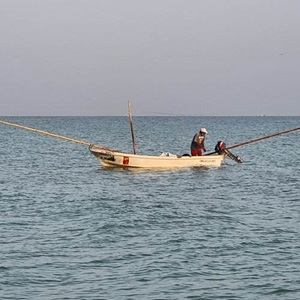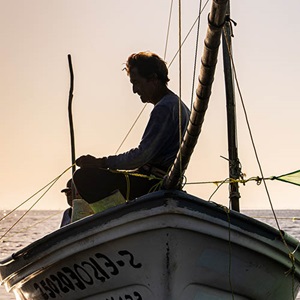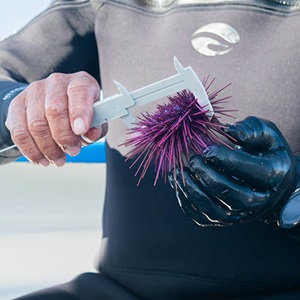Renewed grant means Mexican fishery will take final steps to sustainable management of red sea urchin banks and kelp ecosystem recovery.
- Implementation of sea urchin banks recovery plan
- Improved management and testing models for harvest strategies
- Fishery data and monitoring systems for compliance and enforcement
Start date: 01 April 2023
£25,000
Transition Assistance Fund
Awardee
Pronatura Noroeste
Fishery
Mexican Pacific, Baja California, red sea urchin - divers on hookahs & hooks fishery
Halfway to sea urchin recovery
The hookah and hooks red sea urchin fishery in Baja, California, Mexico uses ‘hookahs’ - air lines connecting the diving fishers to an onboard air pump - to selectively harvest red sea urchins.
Now in its third year of making improvements through the In-Transition to MSC program, the Baja California red sea urchin fishery has received renewed funding from the MSC Transition Assistance Fund. This will support the fishery in implementing the seven remaining improvements that must be made before it can progress to assessment against the MSC Fisheries Standard in 2025.
Recovering sea urchin banks
Recovery of red sea urchin banks is important for marine kelp forests, on which the urchins feed. Kelp forests are habitats for a wide range of other species, act as coastal defence against land erosion and protect the shoreline from storm damage. In the absence of their natural predators e.g., sea otters, sea stars - sea urchin populations can proliferate and decimate the kelp.
Maintaining sustainable stocks of red sea urchin populations is essential for ecological balance of kelp habitats. Trained hookah-diving fishers will remove prolific and highly competitive purple sea urchins to keep their numbers down and prevent urchin-induced overgrazing.
In fishing banks where overfishing has led to depletion of stocks, the action plan for red sea urchin recovery includes reseeding of kelp, periodic fishery closures, and relocation of the largest red sea urchins - from overgrazed forests to overfished areas - to restore and rebalance coastal habitats.
Modelling potential management strategies
The Baja California Mexico Pacific red sea urchin fishery is working closely with conservation organisation Pronatura Noroeste, and various stakeholders.
The combined expertise of fishers, scientists and conservationists will determine final management recommendations for the fishery.
With funding from its previous Ocean Stewardship Fund grant, the fishery made statistical models to test various environmental and fishing scenarios on red sea urchin recovery. A focus group will support improved decision-making around management, including the testing and implementation of improved harvest strategies, including harvest control rules and stock status.
Monitoring for compliance and enforcement
To progress to full assessment the fishery must improve its compliance and enforcement responsibilities including monitoring of catch, verified catch estimates and adherence to harvest control rules.
A carefully designed mobile, digital tablet monitoring surveillance system has been developed and successfully used by Pronatura Noroeste in other fisheries and marine protected areas. The newly awarded funding will enable its installation at the red sea urchin fishery.
This system will allow trained fishers to record surveillance actions that demonstrate compliance and any internal sanctions needed to successfully meet sustainability targets for assessment.



-.tmb-thumb300.jpg?Status=Master&Culture=en&sfvrsn=a0cda56e_1)
